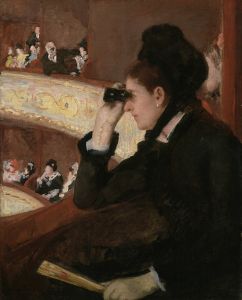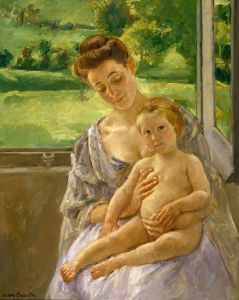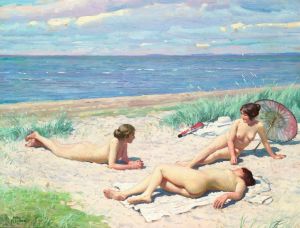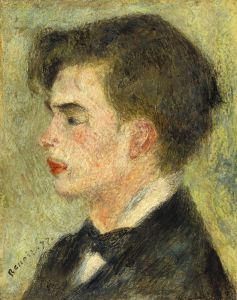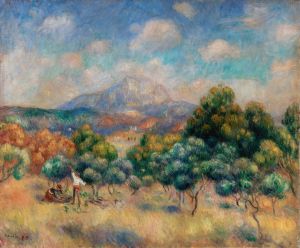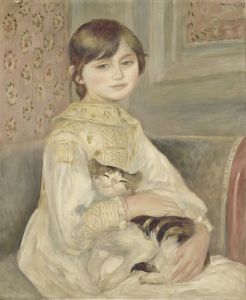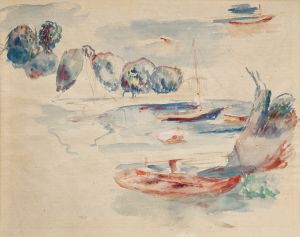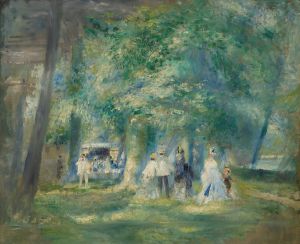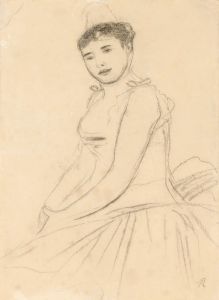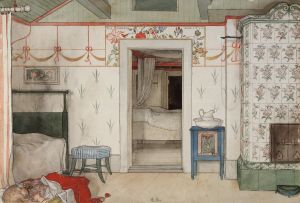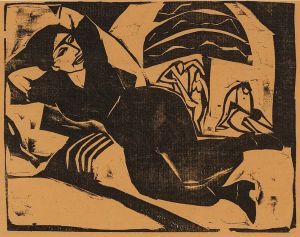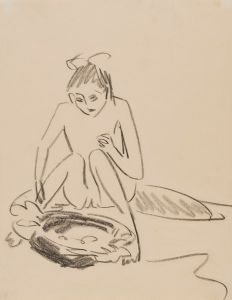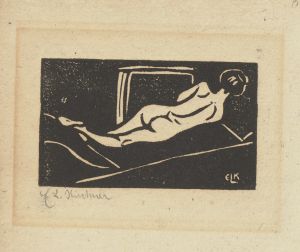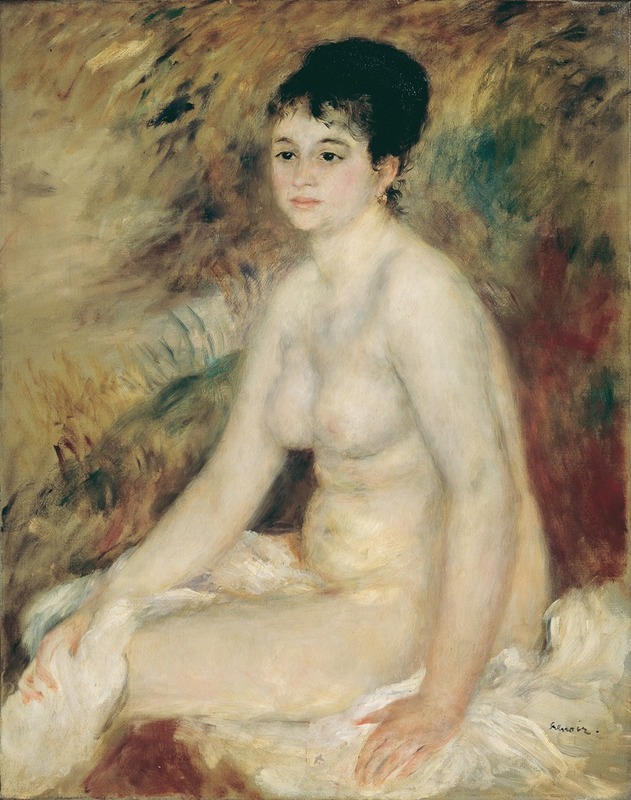
Nach dem Bade
A hand-painted replica of Pierre-Auguste Renoir’s masterpiece Nach dem Bade, meticulously crafted by professional artists to capture the true essence of the original. Each piece is created with museum-quality canvas and rare mineral pigments, carefully painted by experienced artists with delicate brushstrokes and rich, layered colors to perfectly recreate the texture of the original artwork. Unlike machine-printed reproductions, this hand-painted version brings the painting to life, infused with the artist’s emotions and skill in every stroke. Whether for personal collection or home decoration, it instantly elevates the artistic atmosphere of any space.
Pierre-Auguste Renoir, a leading figure in the Impressionist movement, is renowned for his vibrant light and saturated color, often focusing on people in intimate and candid compositions. One of his works, "Nach dem Bade" (translated as "After the Bath"), exemplifies his mastery in capturing the human form and the delicate interplay of light and shadow on skin.
"Nach dem Bade" is a part of Renoir's exploration of the nude, a subject he returned to throughout his career. This painting, like many of his works, reflects his admiration for the female form and his ability to depict it with a sense of warmth and vitality. Renoir's nudes are often celebrated for their sensuality and the way they convey a sense of natural beauty and relaxation.
In "Nach dem Bade," Renoir employs his characteristic loose brushwork and soft color palette to create a scene that feels both intimate and spontaneous. The painting captures a woman in a moment of repose after bathing, a theme that allows Renoir to explore the textures of skin, hair, and fabric. The use of light in the painting is particularly noteworthy; Renoir was adept at using light to enhance the volume and form of his subjects, and in this work, the light gently caresses the woman's body, creating a sense of warmth and immediacy.
Renoir's approach to the nude was influenced by his study of classical art, yet he infused his works with a modern sensibility that was distinctly his own. Unlike the more static and idealized nudes of classical art, Renoir's figures are often depicted in natural, unguarded poses, which adds to their lifelike quality. This approach was part of a broader trend in Impressionism to capture fleeting moments and the effects of light, rather than focusing on precise detail.
The painting also reflects Renoir's interest in the domestic and the everyday. By choosing a subject engaged in a private, routine activity, Renoir invites the viewer into a personal space, creating a sense of intimacy and immediacy. This focus on the everyday was a hallmark of the Impressionist movement, which sought to depict modern life in all its forms.
Renoir's "Nach dem Bade" is a testament to his skill as a painter and his ability to convey the beauty of the human form. It exemplifies his talent for capturing the subtleties of light and color, as well as his sensitivity to the nuances of human expression and form. The painting remains a celebrated example of Renoir's work and continues to be admired for its beauty and technical mastery.
Overall, "Nach dem Bade" is a significant piece within Renoir's oeuvre, reflecting both his artistic influences and his contributions to the development of modern art. Through this work, Renoir not only showcases his technical prowess but also his ability to imbue his subjects with a sense of life and presence that continues to resonate with audiences today.





